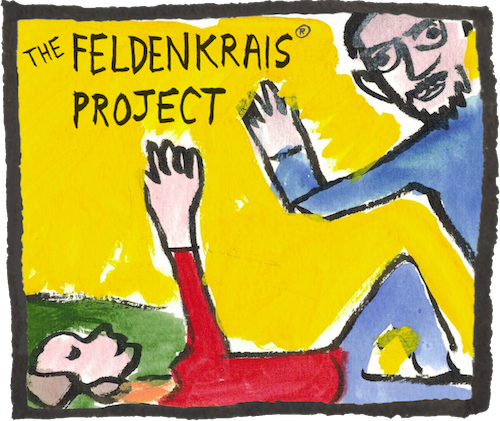Position: back-lying
68m
Workshop: Spinal Support and a Powerful Pelvis (Patrons)
This full workshop recording presents two short talks and two lessons on the theme of Spinal Support and a Powerful Pelvis. Patrons can listen to the full, uninterrupted workshop on this page. All users can access the separate, edited tracks in our Getting Oriented collection.
65m
Easing the Jaw, Neck, and Shoulders
Back-lying, briefly framed by seated explorations. Exploring and refining basic movements of the jaw, and integrating them with movements of the head, neck, and shoulders. This lesson is often helpful for reducing many types of jaw-related tension and discomfort, including some kinds of headaches, TMJ pain (temporomandibular joint), and discomfort and stiffness in the neck, shoulders, and spine. The recording begins with an important discussion.
33m
Lengthening the Arms, Freeing the Scapulas (33m, Patrons)
Back-lying, knees bent, arms often resting loosely upwards on the floor, and in self-hug position at other times. Lengthening the arms, differentiating the head, and expanding the mobility and self-image of the shoulder blades (scapulas).
64m
Advanced Folding (Patrons)
Back-lying, knees bent, drawing the head, elbows, and knees toward each other in different combinations, followed by more advanced variations. Improve the folding and unfolding of the body through refining coordination of the flexor muscles with the simultaneously lengthening extensors. Includes detailed work with the hips and eventually lengthening the hamstrings while flexing elsewhere.
63m
Spine and Chest Side-Bending, Lengthening Limbs
Framed by standing explorations of how we shift weight onto one foot, this mostly back-lying lesson (often one or both knees bent) is designed to free the torso and improve awareness, suppleness, and integration of lateral movements of the spine and chest in walking. Includes explorations of sensing and initiating movement from the spine.
65m
Walking with Your Sternum (Patrons)
Back-lying, often knees bent. Learn how preparatory movements for taking a step involve the whole self. Sense and explore movements of the sternum, both as a reference and a challenge to expand the self-image of walking. Arms lengthening and sweeping in many directions encourages suppleness of the chest and awareness of the sternum, and helps integrate the arms with movements of the pelvis, hips, and walking.
61m
Nodding into Lengthening the Heels (Patrons)
Back-lying, often one or both knees bent, exploring relationships of "nodding" parts of ourselves in the sagittal (up/down) plane, including head, pelvis, one foot, and two feet, to better organize the full unfolding of the legs and send our heels into the world, a function essential for clear skeletal support while standing or walking.
62m
Connecting the Legs and Chest (Patrons)
Mostly side-lying, exploring relationships of the head, spine, chest, and pelvis with a riddle: how do we actually lengthen a leg? Designed to bring awareness and improvement to an action we need for every step we take in the world, this lesson uses breath, foundation forces, and "hinging" at the feet and knees to connect our image of leg lengthening with our whole self, especially the chest.
31m
Supple Ankles, Shifting Pelvis (31m, Patrons)
Framed by explorations in standing, this mostly back-lying lesson explores how improvements in the sensitivity and function of the ankles and feet relate to movements of shifting and turning the hip joints, pelvis, spine, and chest.
59m
Basic Arching and Folding (Patrons)
Front-lying, improving the organization of the extensor muscles of the back and distributing their efforts. Learning to lift the head and one arm – and later, one leg – away from the ground together. Integrating the eyes with these arching movements. Alternates with back-lying, knees bent, feet standing, basic folding (flexion) movements, as the brain is always coordinating the major flexors and extensors of the body with each other.
